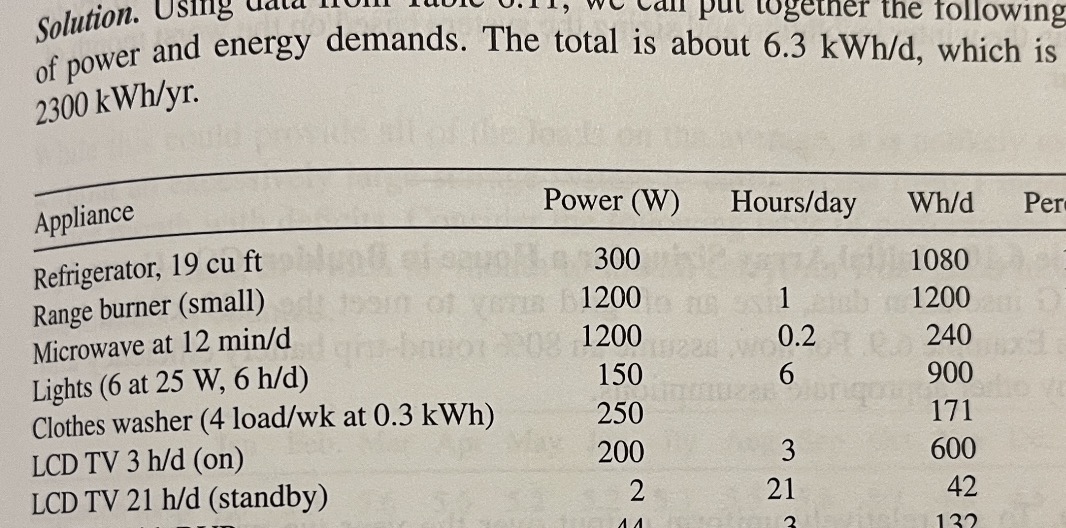First is the vision. You need to describe what you plan to do: make money by selling it on the grid (“GRID-TIE system”), reduce your electricity bill (“GRID FALLBACK”), or go fully autonomous with a “STAND ALONE SYSTEM.”
Once we have an idea of the system to be created, you can list all the machinery and electric appliances that will be linked to the system and retrieve their watt consumption.
Energy needed = Watt x Hour of usage.
A small household with a fridge, TV, microwave, lighting, and laptops would use about 7kWh per day.
Next, check the size of the solar panel based on your specific location. (See Global Atlas for example, link below). It will allow you to quickly find out your “daily hours of peak sun.”
Example: For Lyon, France, you have about 3.5 hours of “peak sun.”
7kWh / 3.5h = 2kWc
We must take into consideration the “loss of power” in the inverter, battery, and cables. As a simplification, we can take a 0.77 derate, so the final calculation is:
2 / 0.77 = 2.6kWc of solar panel, which will be covered by about 5x 540Wc panels.
Is your roof or garden large enough? A 540Wc panel is about 2sqm, so you need at least 10sqm of unshaded areas to position your solar array.
To complete the system, you can select the inverter based on the solar panel size. In our example, you can use a 3MW hybrid inverter.
Reminder: To avoid islanding situations and get paid for the electricity fed into the grid, a “Grid tie system” will require a specific inverter and reporting to the local government. Check your local policy in advance.
Battery size will depend on the type of system and strategy of usage. As an example, for a full stand-alone system, you need to consider 5 days of energy supply to achieve 99% of your electricity needs.
Ultimately, what will make a difference is the budget you can afford. A 3-day supply of battery will cover 95% of your needs already, so you cut your battery cost by half simply by adjusting your usage. You can go even cheaper and consider only a “day of supply,” which will allow you at best to pass the night (depending on your night electric need).
So for our system, we might need a 7kWh battery, which will be of 150AH capacity at 48V.
Important: Consider the maximum DOD (depth of discharge) of your battery during the sizing. To ensure the battery lasts the 5000 nominal cycles of an LFP battery, you should not go below 50% of discharges.
Hope this article helps in your designs.
原文 Original post
